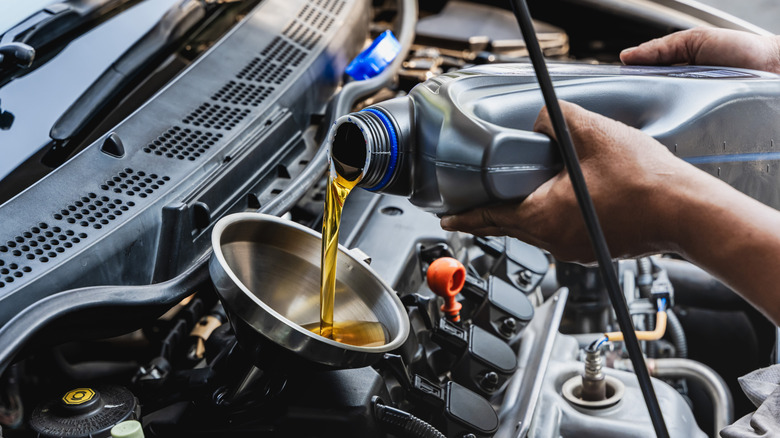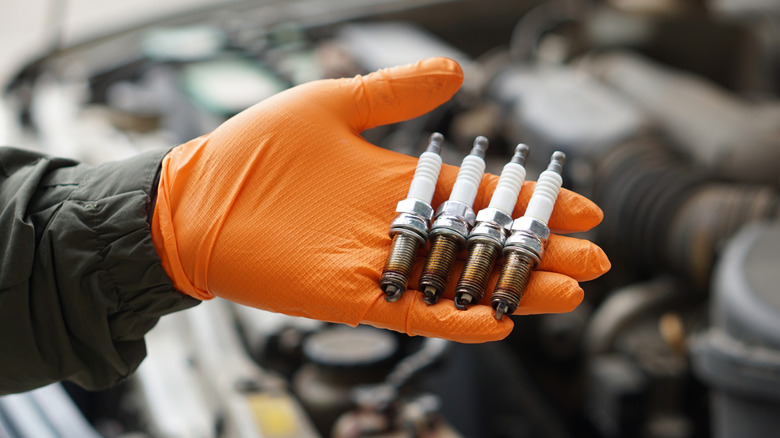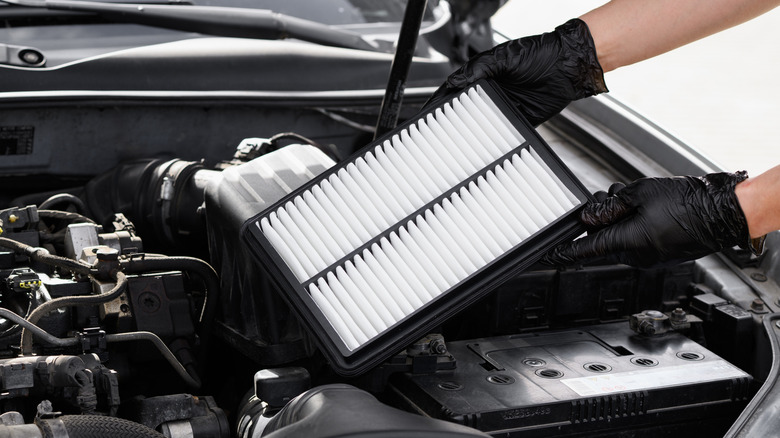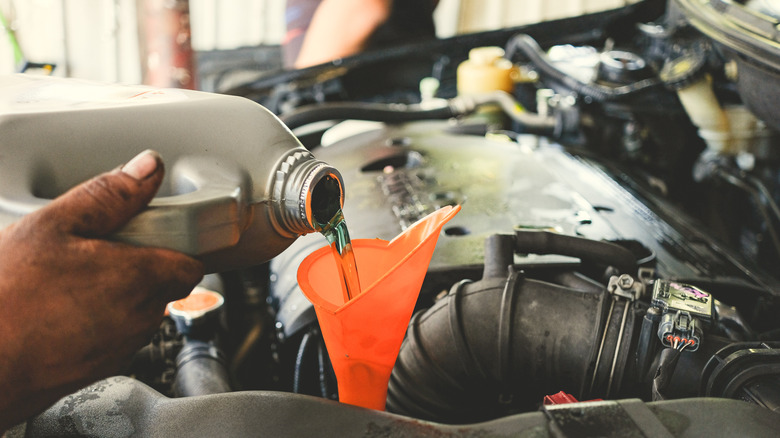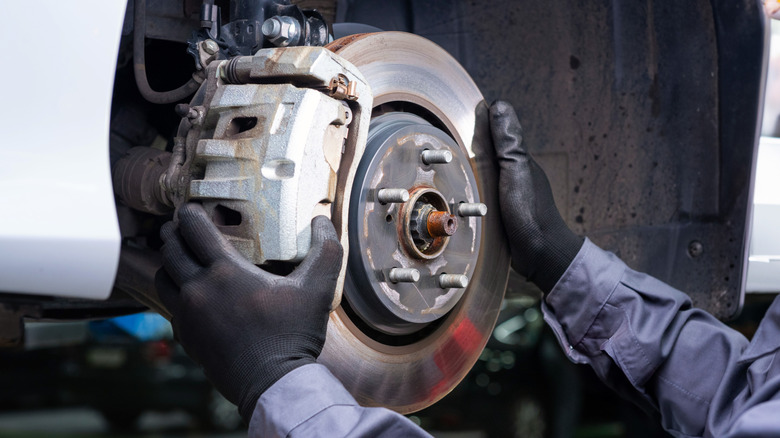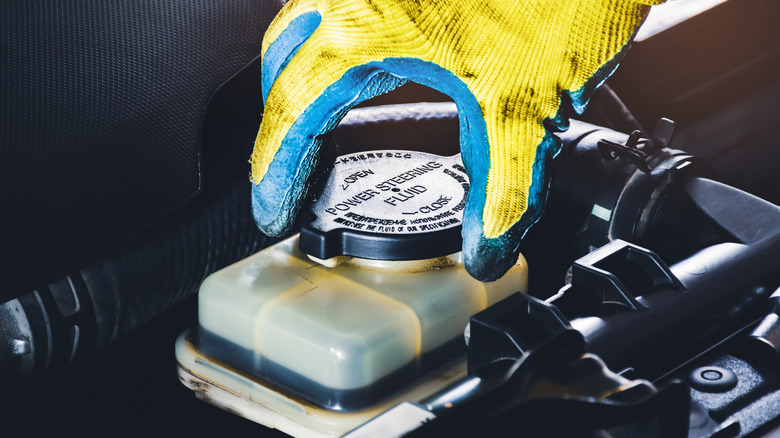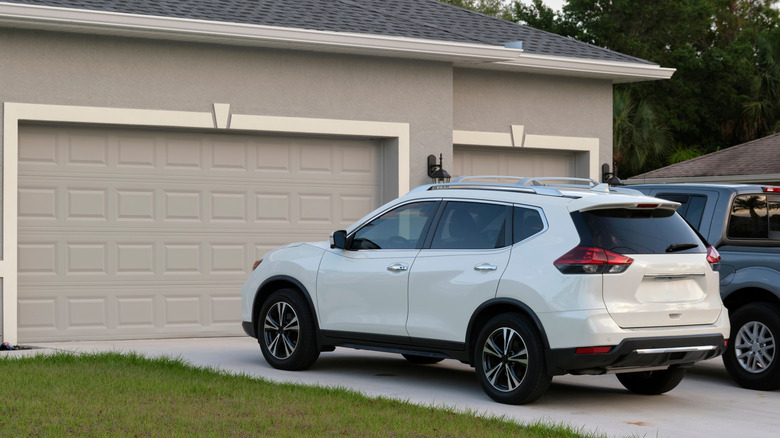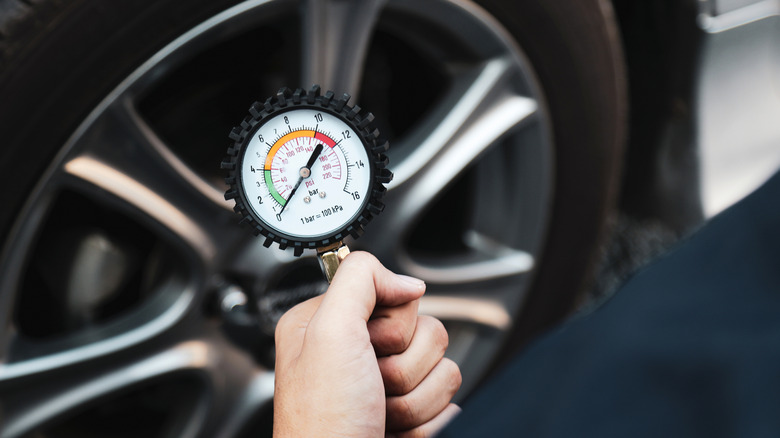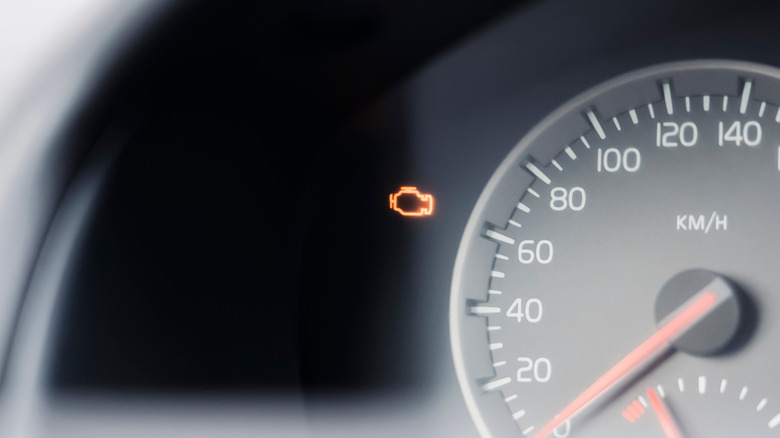10 Ways To Make Your Car Run Smoother
Maintaining a car correctly can be a hassle, and if you're short on time or cash, it can be easy to overlook a few tasks. However, if you want to keep your car running smoothly over the long run, it's vital to properly look after it, and that includes keeping up with all of its maintenance requirements. Some cars are generally easier to look after than others, and some brands will cost more to maintain on average, but even cars with lower maintenance requirements won't be as reliable if owners choose to skimp on servicing.
If you're looking to keep your car running smoothly over the course of your ownership, there are a few things worth remembering that should give it the best chance of staying trouble-free. These tips are only general advice, and for more specific maintenance information, it's always a good idea to check your owner's manual, which will tell you everything you need to know about how to keep your car in top condition.
Don't forget to change your engine oil
Whether take care of it yourself or get a shop to do it for you, it's always advisable to ensure your car's oil is changed according to schedule. The interval between changes varies between different makes and models, and so it's best to check your owner's manual for the specifics of what your car requires. If you choose to take it to a shop, you will likely end up paying more than doing it yourself, but you also won't have to worry about making a mistake changing the oil and costing yourself more time and hassle in the long run.
Changing your own oil is a fairly straightforward procedure, but if you're unsure, it's probably best to let a professional do it. They'll also be able to make sure you're using the correct type of engine oil for your car's engine. Using the wrong type of oil can lead to a whole host of problems, including having problems starting the car, particularly during extremely cold or hot weather, or a burning smell coming from the engine bay.
Check your spark plugs
Another essential engine component that it's important to keep in top condition is the spark plugs. Changing spark plugs yourself will require several tools, but it will be a simple job for a mechanic if you take your car to a shop. Exactly when you'll need to replace your spark plugs will depend on your car and the type of spark plugs it uses. Some cars will need them replaced every 30,000 miles or so, but others will last far longer.
Working out if you have a bad spark plug is not always straightforward, as there can be several signs that appear and many aren't exclusive to one particular fault. Lower fuel economy, engine misfires, and lumpy idle can all be signs of deteriorating spark plugs, alongside reduced performance. Sometimes, checking the spark plugs and replacing them if needed are included services when you take a car to a shop for a major service — but not always, so it's best to check.
Check your air filter and replace it if needed
The air filter is also essential to keep your car running smoothly, although if you're attempting to replace it yourself, you should avoid making any of the most common mistakes. Make sure you know whether your car has a paper filter or a cotton gauze filter, as paper filters are cheaper but they can't be washed and reused. Cotton gauze filters, on the other hand, can be reused as long as they're cleaned and treated properly before being refitted.
Not replacing a dirty paper air filter can cause serious problems, with the most noticeable one being that your car's performance will likely suffer, as it can't draw in enough air. While it won't make a difference to how smoothly the car runs, it's also worth checking and potentially replacing your cabin air filter, which helps keep the air that you and your passengers breathe free from dust and pollutants.
Make sure you have enough transmission fluid
Automatic transmissions require transmission fluid, although not all of them need their fluids replaced. Some transmissions are built to be sealed for the lifetime of the car, and so there's no need to worry about monitoring fluid levels. If you have an automatic transmission that does need its fluid replaced, you should find a dipstick with either a color or a transmission logo somewhere in the engine bay.
To check it, warm the car up then leave it in park, open the hood, and pull out the dipstick. Wipe it, replace it, then pull it out again, and check the fluid level.
If it's too low, you'll need to top it up. Replacement fluid can be bought from parts stores, but make sure you get the right one — different types of transmissions use different types of fluids, but your owner's manual will tell you which one to use. It might also be worth checking for signs of leaks while you're inspecting the car. The color of the fluid is also worth checking. If it starts to turn brown or black, it probably needs replacing.
Replace your brake pads when needed
Accelerating smoothly is only part of the equation. Braking smoothly is arguably just as important, and the best way to ensure that your car's brakes are in good condition is simply to check them regularly so you can spot if they're starting to wear out. There are several signs that they might need replacing, including grinding sounds, a loss of braking power, and a vibrating brake pedal. Many modern cars will also display a warning light on the dashboard if their systems detect that the brake pads are worn.
If brake pads don't get replaced when they need to, it can cause damage to the rotors and other parts of the braking system, potentially leaving you with a bigger bill to fix them as well as a less safe vehicle. The lifespan of brake pads will vary significantly depending on the type of driving you do as well as the car itself, with their estimated lifetime running from 30,000 to 70,000 miles. Like all the other tips here, if you're not comfortable checking the condition of your brakes yourself, you can take your car to a mechanic, where it will be a quick and easy job.
Occasional take longer drives if you have a diesel
If you drive a car or truck with a diesel engine, it's important to take care of its diesel particulate filter, or DPF. It's designed to trap toxic particle emissions from engines but over time can become blocked. This in itself isn't anything to worry about, as some diesel vehicles can actively regenerate — i.e. unblock — their filters by themselves. However, other, older vehicles might require passive regeneration, or simply a trip to the auto shop.
To keep a DPF in good condition, it's best to take occasional longer drives, particularly if you spend most of your time doing shorter journeys. Giving a diesel vehicle a run up the highway for an hour or so should help passively regenerate the filter, keeping it from getting blocked. For cars with active regeneration, it can take as little as 10 minutes at highway speeds to clear the filter.
Keep an eye on your power steering fluid
It's one of a number of important vehicle fluids, although power steering fluid can be easy to overlook. Not all vehicles will have power steering fluid, as some have an all-electric system that negates the need for hydraulics and thus doesn't need hydraulic power steering fluid. Those that do have fluid will have a tank somewhere in the engine bay, sometimes with a steering wheel logo or with the words Power Steering.
Keeping an eye on the color of your power steering fluid is the easiest way to check its condition. If it's brightly colored and relatively clear, it's okay, and if it's cloudy or turning brown, it most likely needs changing.
The level of the fluid shouldn't change much over time, and if it does go down, then you'll need to check for a leak. Having a leak can cause a variety of issues, including inconsistent steering and noisy operation, so it's worth getting it sorted as quickly as possible. You might be able to spot the source of the leak, but if you can't, it's best to get it looked at by a mechanic.
Let your car warm up slightly before driving
While it's not necessary to let a modern car warm up for extended periods of time, it's still a good idea to give it a few seconds before driving off. For most people, the time it takes them to fasten their seatbelt and select their favorite driving playlist should be plenty of time. In the winter, it can be helpful to let the car idle for a little longer, but for no longer than a minute or so.
Leaving it running for extended amounts of time burns unnecessary fuel and can actually make it take longer for your car's cabin to get warm. For owners of much older cars — that is, those that are forty years old or more — it can be sometimes useful to leave the car idling for a couple of minutes. Owners of hybrid cars don't need to let the vehicle warm up at all, and can simply drive off as soon as they're ready.
Check your tire pressure
Having the incorrect tire pressure can lead to your car's ride being rougher, but that isn't the only reason to check it. A tire that's inflated too much can also wear faster in the middle, meaning you'll get through tires faster and spend more on replacing them in the long run. An underinflated tire can be just as costly, as it will wear quicker on the sides. It can also result in your car having less grip on the road, as well as affect its braking distance and fuel efficiency.
To find the correct pressure for your tires, you'll need to consult your owner's manual or look for a sticker on the inside of your driver's door or on the inside of the fuel flap. Keep in mind that multiple pressures might be listed — the front and rear tires might need different pressures, and most manufacturers also list one standard pressure and another for when the car is heavily loaded.
Don't ignore warning signs
Modern cars have a vast array of sensors that can let drivers know if they detect anything wrong. Arguably the most important tip of all to keep your car running smoothly is to not ignore your car if it warns you that there's an issue.
Alongside the common dashboard warning lights, many modern cars will also send their drivers more detailed warning messages through their infotainment screens. Taking your car to a shop promptly after a warning light appears can save you cost and hassle compared to putting it off or simply hoping it goes away.
As well as warning signs from the car itself, it's also worth keeping an eye out for less obvious signs. An unusual noise, a change in how a car drives, or a sudden and unexplained drop in fuel economy can all be indications that something might be wrong, and to keep a car running smoothly, it's always best to get them checked out promptly.

